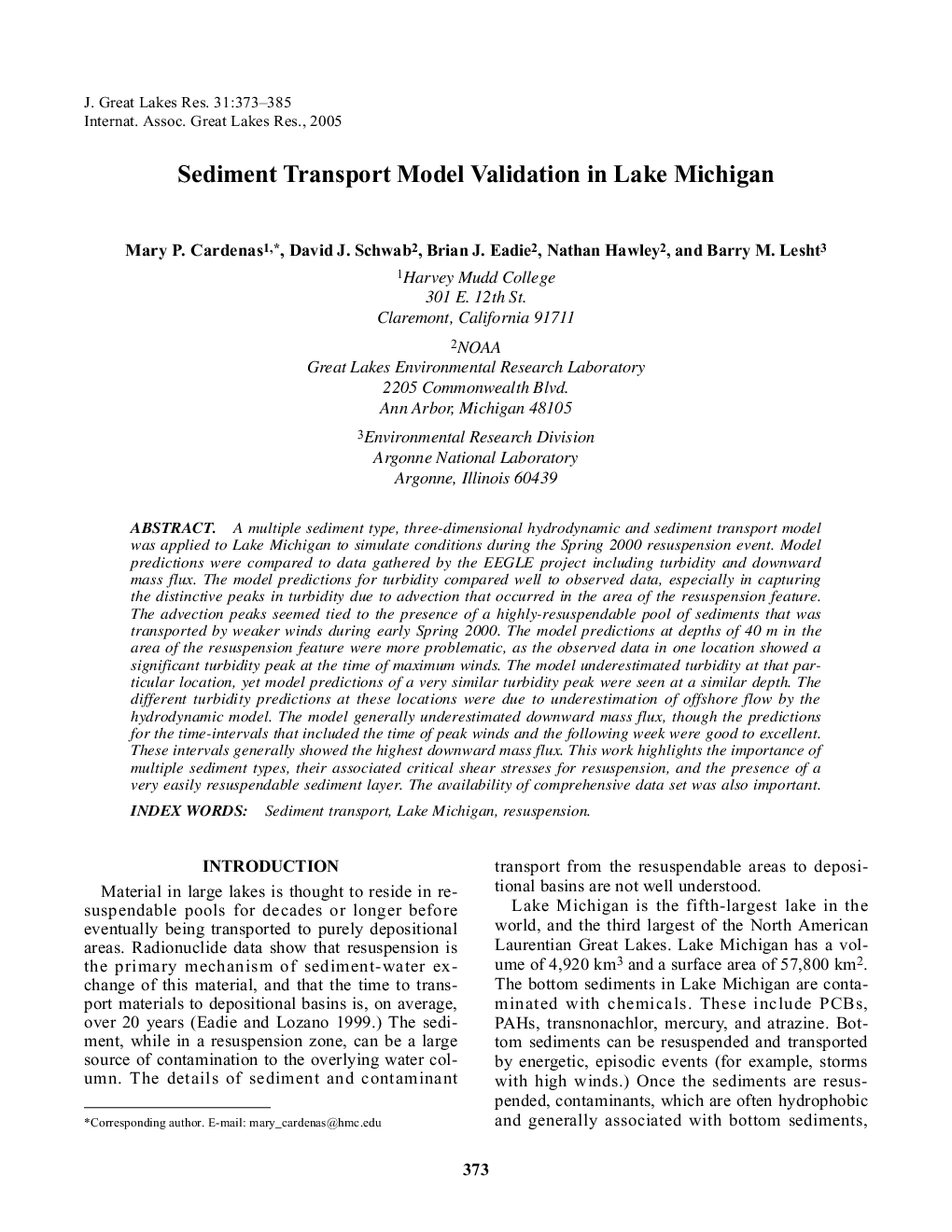| کد مقاله | کد نشریه | سال انتشار | مقاله انگلیسی | نسخه تمام متن |
|---|---|---|---|---|
| 9450134 | 1306736 | 2005 | 13 صفحه PDF | دانلود رایگان |
عنوان انگلیسی مقاله ISI
Sediment Transport Model Validation in Lake Michigan
دانلود مقاله + سفارش ترجمه
دانلود مقاله ISI انگلیسی
رایگان برای ایرانیان
کلمات کلیدی
موضوعات مرتبط
مهندسی و علوم پایه
علوم زمین و سیارات
علوم زمین و سیاره ای (عمومی)
پیش نمایش صفحه اول مقاله

چکیده انگلیسی
A multiple sediment type, three-dimensional hydrodynamic and sediment transport model was applied to Lake Michigan to simulate conditions during the Spring 2000 resuspension event. Model predictions were compared to data gathered by the EEGLE project including turbidity and downward mass flux. The model predictions for turbidity compared well to observed data, especially in capturing the distinctive peaks in turbidity due to advection that occurred in the area of the resuspension feature. The advection peaks seemed tied to the presence of a highly-resuspendable pool of sediments that was transported by weaker winds during early Spring 2000. The model predictions at depths of 40 m in the area of the resuspension feature were more problematic, as the observed data in one location showed a significant turbidity peak at the time of maximum winds. The model underestimated turbidity at that particular location, yet model predictions of a very similar turbidity peak were seen at a similar depth. The different turbidity predictions at these locations were due to underestimation of offshore flow by the hydrodynamic model. The model generally underestimated downward mass flux, though the predictions for the time-intervals that included the time of peak winds and the following week were good to excellent. These intervals generally showed the highest downward mass flux. This work highlights the importance of multiple sediment types, their associated critical shear stresses for resuspension, and the presence of a very easily resuspendable sediment layer. The availability of comprehensive data set was also important.
ناشر
Database: Elsevier - ScienceDirect (ساینس دایرکت)
Journal: Journal of Great Lakes Research - Volume 31, Issue 4, 2005, Pages 373-385
Journal: Journal of Great Lakes Research - Volume 31, Issue 4, 2005, Pages 373-385
نویسندگان
Mary P. Cardenas, David J. Schwab, Brian J. Eadie, Nathan Hawley, Barry M. Lesht,